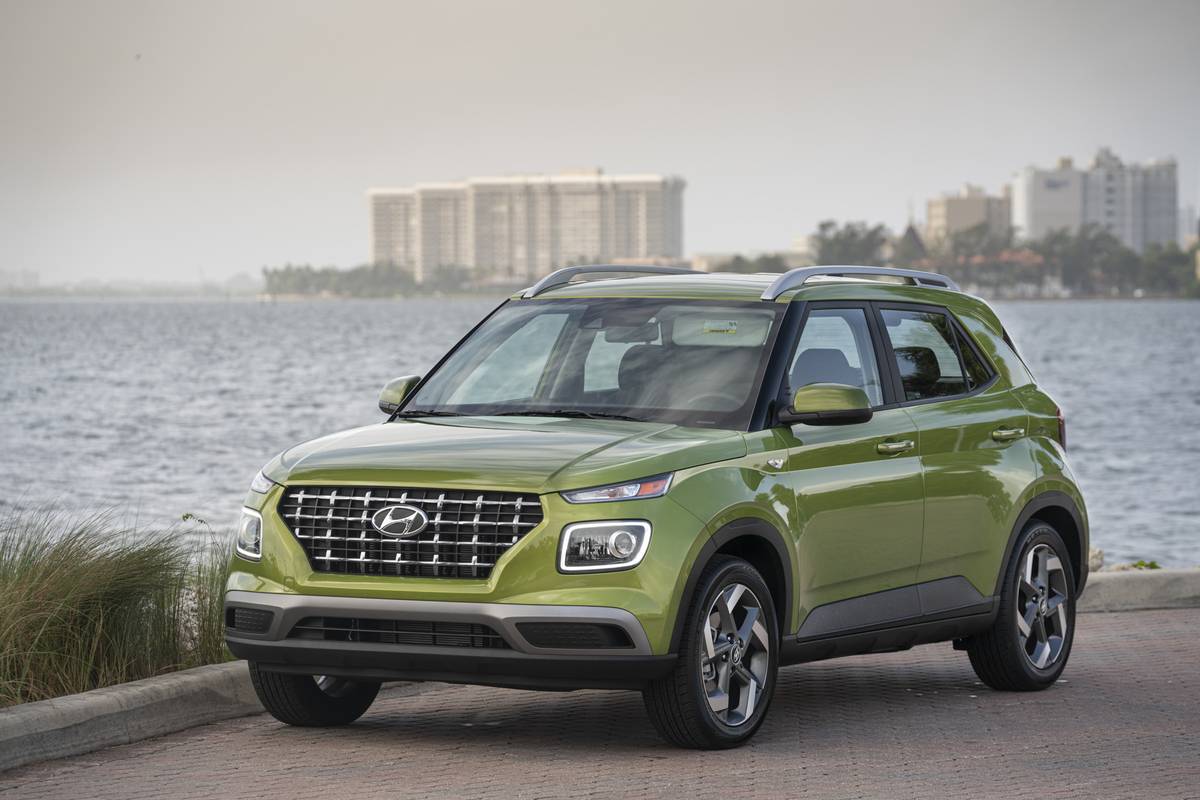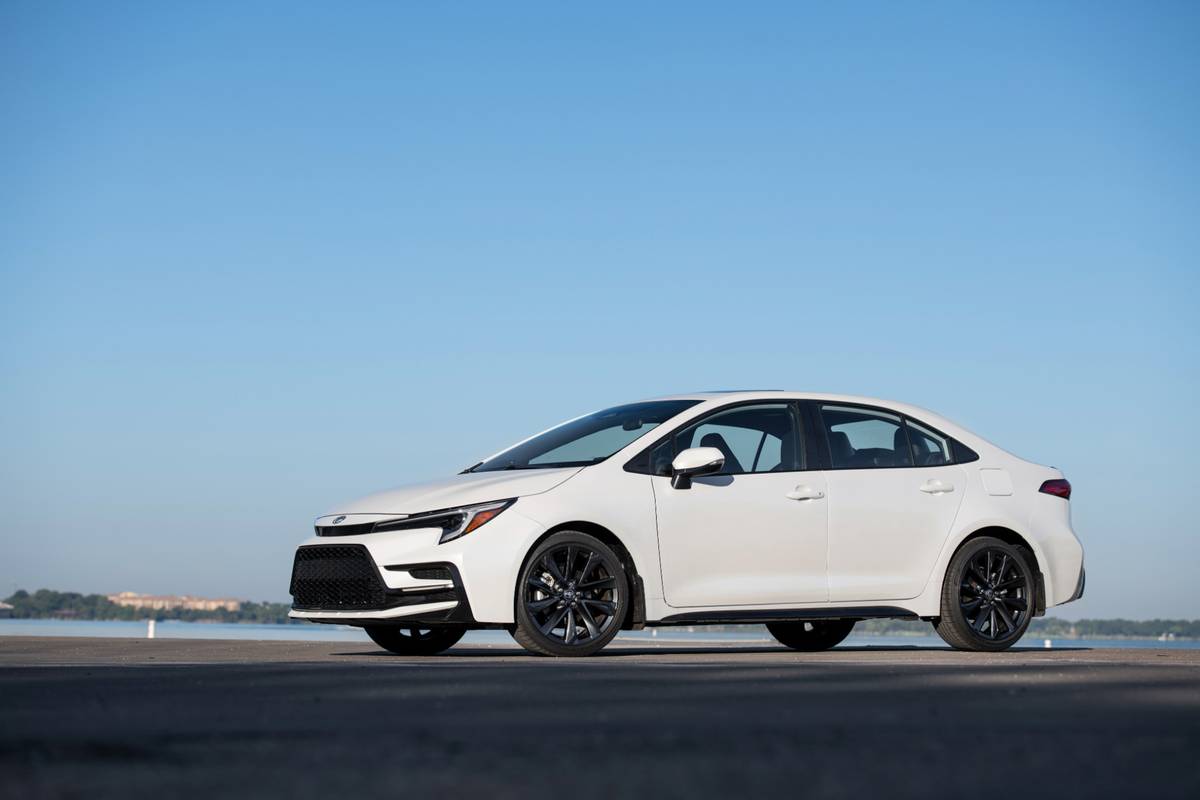Affordable Cars Under $30,000 Face the Biggest Threat From Trump’s Tariffs


If you’re looking for an affordable car, don’t wait. Not only are sub-$30,000 cars a far thinner share of the market compared to before the pandemic, but 89% of cars in that price range listed on Cars.com in March 2025 were assembled outside the U.S. With steep tariffs now in place on automobile imports into the country and parts tariffs set to go into effect in May sure to drive the cost of producing every car even higher, cars under $30K may become an even rarer sight on dealership lots over the next couple months.
Related: 2025 Cars.com Affordability Report: Best Value New Cars
While sub-$30K cars were the fastest-growing segment on Cars.com in March 2024, that title has been taken by cars that cost between $30,000 and $49,000. Only 14% of the vehicles for sale on Cars.com in March were priced under $30,000, which is less than half of the 38% share of our inventory they had from 2019-21. So, not only is finding one going to be tough, but they may become even more scarce if tariffs on imported cars stick around for the long haul.
How Vulnerable Are Affordable Cars to Tariff-Related Price Hikes?
The most affordable cars have lower profit margins than luxury pickup truck trims or sports cars that can be optioned to the nines. To save money on production, many of these cars are now assembled in other countries with lower labor costs, such as Canada, Mexico and South Korea. Unfortunately, the recently instated 25% tariff on vehicle imports is already a huge jump in price for cars assembled in other countries on the company’s side, and the upcoming 25% tariff on automotive parts means that even cars assembled here will be more expensive to assemble. Every model-year 2025 vehicle under $30K sources at least 40% of its parts from outside the U.S. and Canada, per Department of Transportation data.
Some of the cars assembled in Canada or Mexico may still qualify for tariff-free importation under the U.S.-Mexico-Canada Agreement that governs trade with our two closest neighbors, but even then, those looming parts tariffs on components could still increase their production costs.
Let us state the obvious here: Companies have to turn a profit in order to stay in business, and they generally like to make a little more than break even so they can ride out various low points in sales or production, such as the recent pandemic-era chip shortage. When cars cost more to produce, that cost either has to be absorbed by the company or passed along to consumers. Some vehicles may also disappear from the U.S. market if companies no longer find them profitable to sell.
Of the model-year 2025 cars with starting prices under $30,000, only 12 are assembled in the U.S.: the Honda Civic and Accord; Kia Sportage; Nissan Altima, Leaf and Rogue; Subaru Crosstrek and Legacy; Toyota Corolla, Corolla Cross and Camry; and Chevrolet Malibu. Even that shred of good news comes with an asterisk, according to Cars.com data: Roughly half of all non-hybrid Honda Civics are built in Canada, and the Civic’s hybrid trims are assembled in Japan. According to Bloomberg, Honda plans on shifting production of the Civic hybrid from Japan to the U.S. this summer in response to the tariffs, but that still means Honda’s getting tariffed for its imported Civic hybrids in the meantime. Likewise, a quarter of all Corollas on sale on Cars.com were assembled in Japan, as were one-third of Subaru Crosstreks and nearly half of all Nissan Rogues.
The Malibu and Legacy have a different problem: They’re not long for this world. The Legacy is set to end production before the summer of 2025 and Malibu production already ended in November 2024, with 2025 being the last model year for both. While it’s possible that pricing for both models could rise to offset tariffs on GM’s or Subaru’s other cars, it’s less likely given that all of the Malibus and most of the Legacies on sale for 2025 have already been built.
How Much Will Tariffs Affect Affordable Cars?

The effect of tariffs on what we pay as consumers is complicated given they’re taxes paid by the importer at the border. Automotive manufacturers and dealerships alike take many different factors when they set pricing on cars, from market research on what consumers are willing to pay to financial agreements and even the region where you buy a car.
The estimates on what this means for mostly imported sub-$30,000 cars is grim. Based on the tariffs that have been announced as of April 2, analysts at the Anderson Economic Group estimate that many small cars assembled in the U.S. could face an extra $2,500-$4,500 added to their price tag, mid-size U.S.-assembled cars could raise in price by $5,000-$8,000, and imported cars could increase by as much as $8,000-$10,000. In their analysis, the Civic was least exposed to increased costs through tariffs, with the Volkswagen Jetta not far behind despite it being assembled in Mexico. This would dramatically reduce the number of cars left under $30,000.
The good news for now is that most of the mass-market automakers are still in “wait and see” mode, holding their prices steady at pretariff prices for the time being. Ford, Hyundai and Nissan have committed to keeping their pricing stable until at least June 2, with VW also saying its pricing will remain untouched through the end of May. However, most experts we’ve consulted on the matter agree on one thing: The longer these tariffs remain in place, the less able manufacturers are to soak up the extra costs and the more likely the price you pay for a new car will go up.
The chip shortage gives us another grim example of what happened when bottlenecks in the supply chain and higher production costs affected vehicle production. Automakers deprioritized affordable trims, focusing instead on more expensive, higher-margin trims that were loaded up with extra features in order to stay afloat. This is another way that sub-$30K vehicles could disappear from dealers’ lots as the tariffs remain in place.
What Can Buyers Do to Find Affordable Cars?

Two words: Buy soon. Many automakers anticipated these tariffs and preloaded their lots with extra inventory before the automotive tariffs went into effect, and some, such as Ford and Stellantis (which makes the sub-$30K Jeep Compass), are offering incentives to help move more inventory before tariffs affect both their profits as well as consumers’ buying power.
Our data back this up. In March 2025, as our current lack-of-gold rush to buy new cars ahead of the tariffs came into full swing, new-car inventory was still up 9% year over year despite new-car sales also rising by 11% in that same time period. According to the Bureau of Economic Analysis, this made the first quarter of 2025 the 11th best in 50 years for new-car sales in spite of factors working against it, including high interest rates and an average new-vehicle price of around $49,000 — nearly 30% higher than it was before the pandemic.
A good resource to check before heading out to dealership lots is our 2025 Affordability Report, which rounds up our picks for the best bangs for your buck on the market. We don’t just factor in the final purchase price; we also factor in average annual fuel costs and whether the car offers the most popular, most helpful features that buyers want. The average price advertised on Cars.com of our subcompact car, compact car, subcompact SUV, compact SUV and compact pickup Best Value winners were all under $30,000 as of early 2025.
We’ve also listed out the assembly final location of each Best Value pick and runner-up, just to show which picks are the most vulnerable to tariff-related price hikes. Unfortunately, most of our least expensive vehicles on the list are all imported from other countries, so you’ll probably want to hit the dealership before the end of May if you don’t want to pay more. Of our sub-$30K Best Value picks, the Ford Escape and some of the runner-up Hyundai Tucsons are made in the U.S. — but that’s all.
If you’re already feeling squeezed out of the price range of the new car you want, you may want to consider a used car. We’ve rounded up our favorites at the $20,000, $15,000 and $10,000 price points as a good place to start, but given that the used-car market is still feeling the effects of lower production during the pandemic, you may have a tough time finding lower-mileage, newer inventory that’s always in the most demand.
On the flip side, if you’re trading in a vehicle, we expect trade-in values to rise as tariffs push more shoppers to consider used cars. Trade-in values are already up 1.9% year over year, and you can use this to your advantage to help offset the price of a new car.
Most of all, as we head into less certain economic times, don’t overstretch your budget just to buy a new (or new-to-you) car. You need to factor in everything from fuel costs to rising insurance rates and what interest rates you qualify for when determining whether or not buying a car is a good idea. (Those low promotional interest rates advertised right now typically only go to buyers with stellar credit scores, for one.) So, unless your existing car is in dire shape, the total cost of maintaining an existing car is likely going to be cheaper than buying a new one.
More From Cars.com:
- Car Affordability Calculator – How Much Car Can I Afford?
- Which Automakers Have the Most New Inventory to Buy?
- If Tariffs Increase Car Prices, How Else Can You Save Money?
- Here Are the 10 Cheapest New Cars You Can Buy Right Now
- Here Are the 10 Cheapest New SUVs You Can Buy Right Now
Related Video:
Cars.com’s Editorial department is your source for automotive news and reviews. In line with Cars.com’s long-standing ethics policy, editors and reviewers don’t accept gifts or free trips from automakers. The Editorial department is independent of Cars.com’s advertising, sales and sponsored content departments.

News Editor Stef Schrader joined Cars.com in 2024 but began her career in automotive journalism in 2013. She currently has a Porsche 944 and Volkswagen 411 that are racecars and a Mitsubishi Lancer GTS that isn’t a racecar (but sometimes goes on track anyway). Ask her about Fisher-Price Puffalumps.
Featured stories




